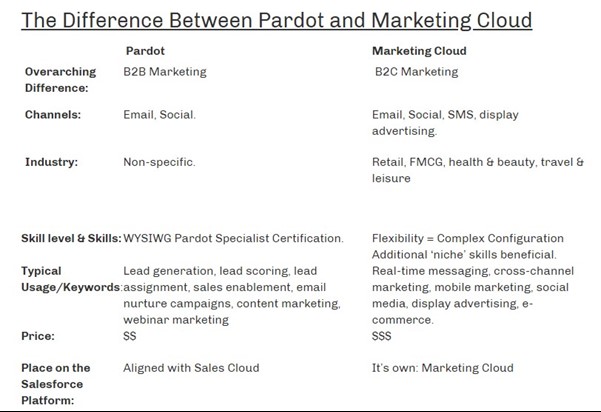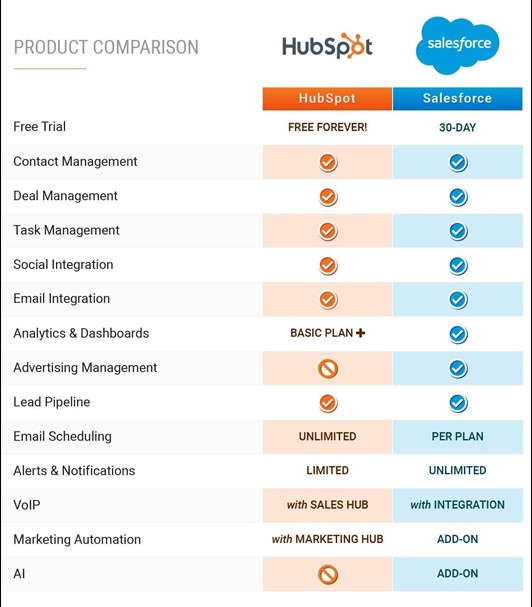Pardot vs Marketing Cloud vs HubSpot - Features and Benefits
Jul 19, 2019 Zarana JoshiYour choice is governed by your ultimate goal

Choosing between these three popular tools, depends on what you’re trying to achieve.
If your primary goal is to nurture leads in order to pass them off at a certain “qualification point” to a specific person or team, Pardot is your tool.
If your main goal is 1-to-1 engagement with consumers, users, and subscribers with a lot of social media emphasis, using the Marketing Cloud is likely more appropriate.
Hubspot is more focused on generating inbound leads.
Marketing Cloud and Pardot, both allow you to start with email campaigns from scratch or let you create landing pages using templates (Pardot offers fewer template options, though).
In terms of flexibility, landing pages created in Marketing Cloud are already mobile optimized. But in Pardot, you will be required to create and maintain landing pages with your own CSS styling to make them mobile optimized.
Then, when you’re ready to publish, Marketing Cloud can help you save and publish your landing page on a future date. This feature comes in handy when you are not ready for opening registrations, launching your white papers, etc. Pardot does not come with this feature. Though, you will be able to hide your landing pages from search engines until you’re ready to make them go public.
HubSpot has an integrated set of tools designed to bring individuals along their buyers’ journeys. Some of the tools are the blogging platform, email functionality, forms, smart content and A/B testing. The goal is to provide relevant content to the visitor that will lead them to a landing page where they submit their information via a form to receive such things as advanced content or a blog subscription.

Working on Campaigns
Pardot makes managing email campaigns easier for marketers. An intuitive editor helps users build visually-pleasing emails. Automation and personalization settings allow marketers to “set and forget.” Marketing messages can be automatically sent to contacts and modified based on contact engagement. Also, A/B testing capabilities let users find out what truly resonates with a lead and craft the perfect message.
Marketing and sales teams can use Pardot’s marketing automation tools to get insights on the effectiveness of their campaigns, identify areas for improvement, and learn the sources of successful campaigns. They can benefit from advanced web analytics tools such as reporting on closed deals and sync prospects from their CRM with visitor stats provided by Google Analytics. In addition, data on paid search, sales lifecycle, and email reporting enables marketers to focus their effort and time on productive activities.
Marketing Cloud allows you to toggle between mobile preview and a live desktop preview as you create your campaign. On the other hand, Pardot requires time to render and uses Litmus for previewing the look of the email on various mobile devices, Outlook, and more. This, of course, will take extra time.
While sending the email campaign, the marketing automation tools let you customize options like creating custom subject lines based on a lead’s location, sender’s name, etc. Marketing Cloud grants more flexibility, allowing all content residing in Salesforce to be used to create and customize targeted subject lines.
Features of HubSpot
read more“For any business, deciding on how to engage with potential consumers and existing users is a critical decision. The first step is in deciding your primary goal.”
- Danny Cobb
- Salesforce Certified Architect
- Six Consulting, Inc.
Ask us anything. From basic questions to complex queries.
We’re ready to talk to you : 470-395-0200
or drop us line at
hello@sixconsultingcorp.com




